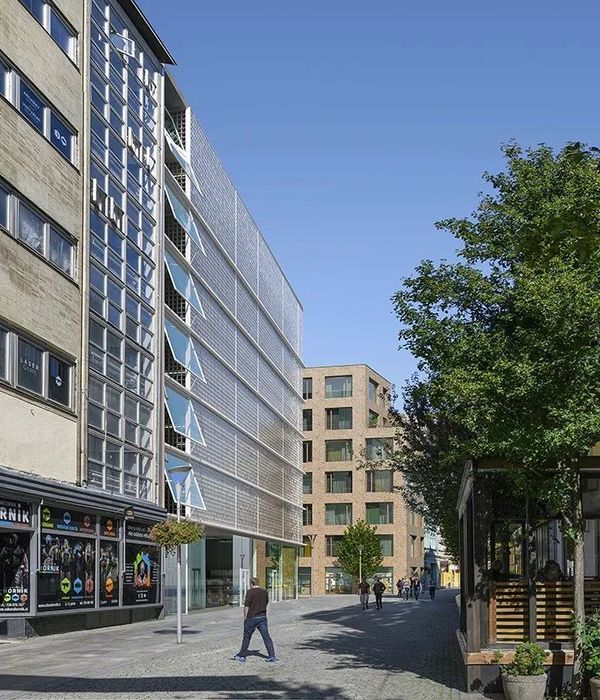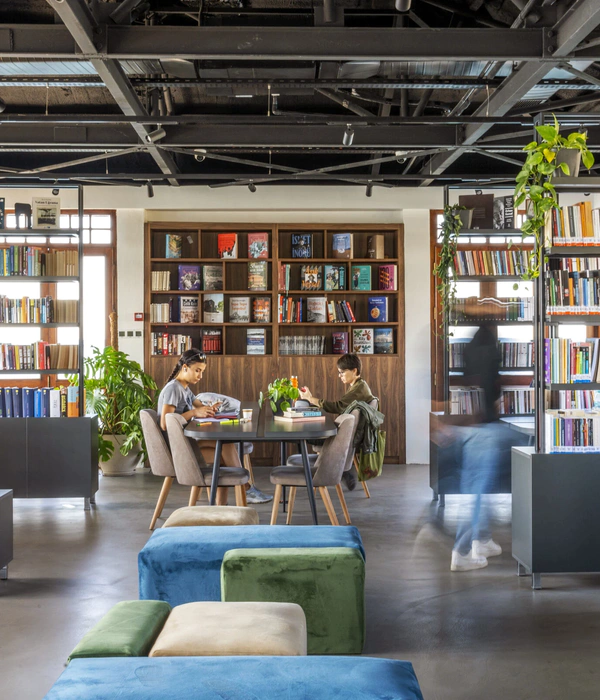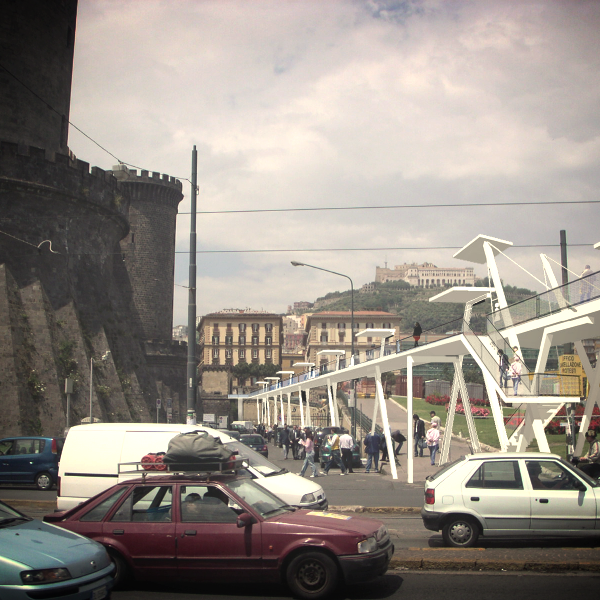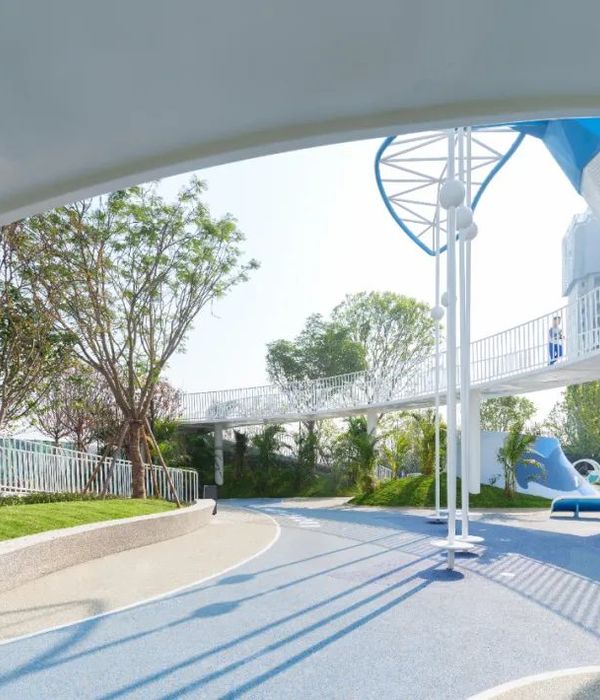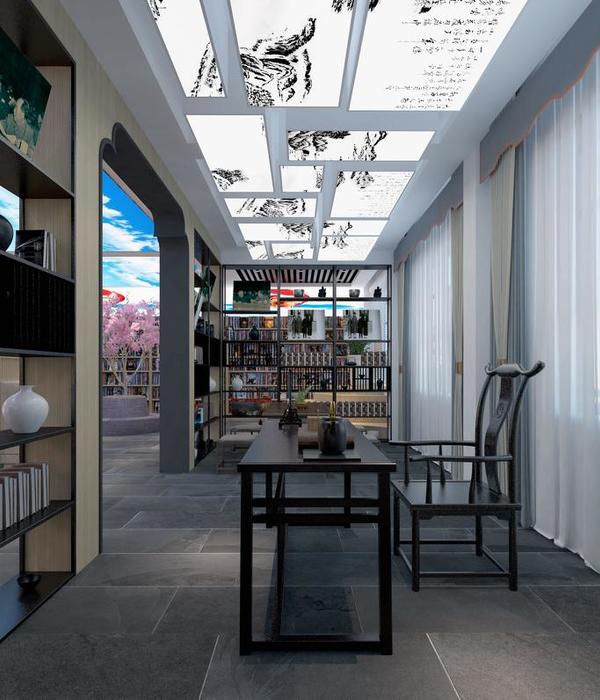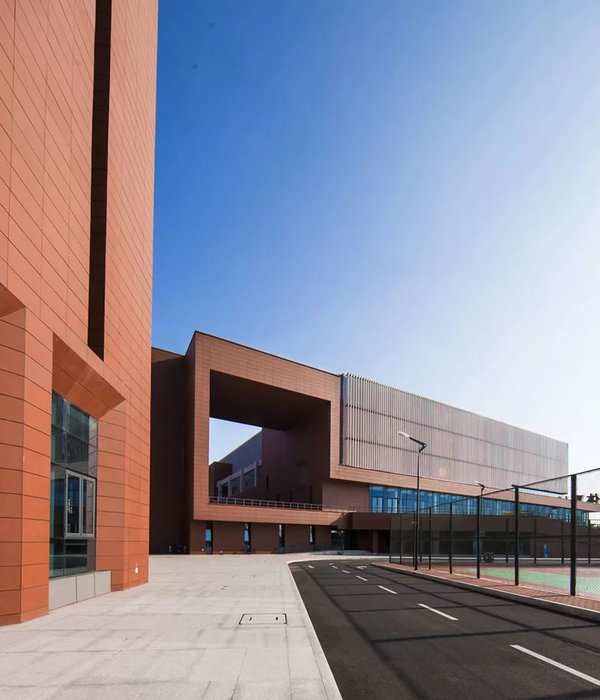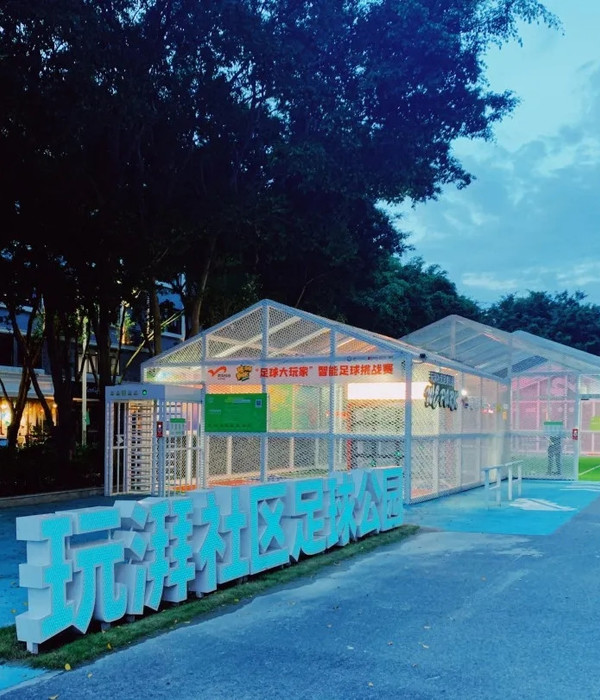杨浦滨江示范段是杨浦滨江公共空间的启动段,为杨浦滨江公共空间的建设乃至整个45公里黄浦江两岸贯通工程都起了重要的示范作用,提供了有效的借鉴意义。由于密集的厂区、单位割据江岸,建筑师作为多年生活在该区域的市民中的一员,从来不曾在杨浦区段接近滨水区域。“临江不见江”是这一区域近百年来的城市空间难题。第一次经过重重障碍步入场地,站在老码头上,摸着满是印痕的栓锚桩,眺望远处陆家嘴金融中心。我们意识到这将是城市空间的一次重要的蜕变,也将是这个城市百年工业文化历程鲜活呈现的重大契机。
The Demonstration Section of Yangpu Riverside Public Space is the initialing stage for the public space development project of the area. It is highly important for it is a benchmark not only for the area, but also for the entire 45km long riverside restoration project. For the dense factories aligning along the shore, the architect, one of the citizens living the area for many years, was never able to walk up to the Huangpu River in this region. “Can’t see the river next to you” has been a problem for the urban space for nearly a hundred years. When first getting to site after many obstacles along the way, standing on the old wharf, feeling the moorings carved by time and looking at skyscrapers of Lujiazui in the distance, we realized that this could be a dramatic transformation on the city’s urban space, and would be a great opportunity to demonstrate the city’s rich culture of industrial development.
▼清晨的液铝码头,liquid aluminum wharf
▼清晨西侧入口处往来的市民,residents exercising on the footbridge at daybreak
既存工业环境的挖掘和延续 Excavation and revitalization of existing industrial remains
将老码头上遗留的工业构筑物、刮痕、肌理作为最真实,最生动,最敏感的映射的记忆进行保留,也就是我们所强调的记忆的空间化和物质化。站在老码头上,倚靠着曾经的拴船桩,遥望黄浦江对岸陆家嘴CBD的场景,城市文化在这样的时间厚度中得以延续。
We kept the structures, scratches and textures as the most genuine, vivid and sensitive reflection of the site’s history. This is the “specialization” and “materialization” of memory that we want to present in this project. Standing on old wharfs with your back against a mooring pole, and gazing at Lujiazui CBD in the distance, you can feel the continuity of the city’s culture and the density of time.
▼1、2号码头间搭建的钢栈桥,the steel pier connecting wharf No.1 and No.2
▼复合功能的钢廊架,sloped corridor for composite functions
▼钢索坡道廊架和奔跑的小孩,a child running in the sloped corridor
▼广场上用栓船桩布置形成的矩阵,an array of moorings as the main landscape factor for a plaza
原生态的景观设计理念 The ecological concept of landscape design
采用有限介入、低冲击开发的策略,在尊重原有厂区空间基础和原生形态的基础上进行生态修复改造。在防汛墙后腹地较大区域原本是一片低洼积水区,水生植物丛生,我们保留了原本的地貌状态,形成可以汇集雨水的低洼湿地。大雨时能起到调蓄降水、滞缓雨水排入市政管网的作用。另外通过设置水泵和灌溉系统,湿地中汇集的水还可用于整个景观场地的浇灌之用。而植物配植以原生草本植物和耐水乔木池杉为主,同时配以轻介入的钢结构景观构筑物,形成别具原生野趣和工业特色的景观环境。
Applying a limited intervention and low impact design strategy, we designed a restoration system of the ecological environment based on the spatial condition of the factories and the local eco system. Behind the original floodwall there was a valley area with many aquatic plant inhabiting a small water puddle. We kept the topology and inserted a ecological wetland which collects rainwater. It collects and reserve water during heavy rain, decreasing the pressure on the drainage system, and reuse it for irrigation of the area’s vegetation through a pump-powered water circulation system. The plants for vegetation are mainly reeds and water-resistant arbor, which are commonly seen in the local eco system. The tectonics of passageways features a light steel structure that minimalizes impact to the environment during construction and in visual aspects places an interesting juxtaposition of industrial and natural landscape.
▼芦苇丛的自然野趣,landscape with natrual features formed by reeds
▼夏日傍晚纳凉的周边居民,nearby residents spending a cool evening by the river in summer times
▼雨水湿地 钢结构栈桥 和 历史建筑,the wetland, passageway and the preserved historical building
▼雨水花园内的钢结构廊桥和凉亭,steel frame structured pavilion and passageway in the wetland
基础设施的景观化利用 The reuse and integration of infrastructure in landscape design
贴近黄浦江的杨树浦水厂为公共空间的贯通提出了挑战也提供了机会。利用水中基础设施的结构作为栈桥的结构基础,实现了断点的贯通。同时将正在工作的基础设施纳入景观设计的范畴,让人们可以欣赏到原来难得一见的角度和景象,也为景观设计和公共活动增添新的内涵。
The Yangshupu water plant poses a challenge but also a chance in the connection of Huangpu River waterfronts. Linkage was achieved by utilizing infrastructures and their structural parts as foundation of new constructions. Also, including the facilitating parts into landscape design offers a new and inspiring perspective for visitors and new content to landscape design and public activity.
▼水厂栈桥和保留的保留系缆墩,the preserved mooring structure in front of the water plant
▼同水厂建筑相结合的坡道,slopes integrating the factory and public space
▼总图,site plan
▼生态设计,ecological design
▼湿地通道方式结构示意图,structural diagram of the passage way in the wetland
▼剖面及节点图,sections and details
▼人行桥通过水厂的结构示意图/倾斜廊道施工图/倾斜廊道详图, structural diagram of the footbridge passing the water plant/construction diagram of the sloped corridor/detail of sloped corridor
建筑师:同济.原作设计工作室(章明/张姿) 设计团队:章明、张姿、秦曙、王绪男、李雪峰、丁阔 合作单位:上海市政工程设计研究总院(集团)有限公司 上海市城市建设设计研究总院 上海东方罗曼城市景观设计有限公司 中交上海港湾工程设计研究院有限公司 上海宏辉港务工程有限公司 项目地点:上海市杨浦区黄浦江岸通北路至丹东路段 设计时间:2015/7-2016/7 建成时间:2016/7 项目面积:38000平方米 摄影:苏圣亮、占长恒、章勇
Architect: Original Design Studio/TJAD (Zhang Ming / Zhang Zi) Design Team: Zhang Ming, Zhang Zi, QIN Shu, WANG Xunan Collaborator: Shanghai Municipal Engineering Design Institute (Group) CO.Ltd Shanghai Urban Construction Design& Research Institute Lighting design: Shanghai Dongfangluoman Urban Landscape Design Ltd. CCCC Shanghai Harbour Engineering Design & Research Institude Co., Ltd. Shanghai HongHui Harbour Engineering Co.,Ltd. Location: Yangpu Riverside Public Space, Shanghai, China Design Period: 2015/7-2016/7 Completion: 2016/7 Site Dimension: 3.8 HA Photographer: Su Shengliang, Zhan Changheng, Zhang Yong
{{item.text_origin}}

